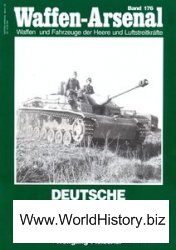The choice of city life over rural life was largely a nineteenth-century and early twentieth-century phenomenon. The long march to city dominance of where most Americans live is revealed in Table 20.1 on page 363, which shows that the percentage of the population living in urban centers nearly doubled between 1800 and 1840, doubled again between 1840 and 1860, and then again from 1860 to 1900. By 1910, nearly 10 percent of the total population lived in three cities—New York, Chicago, and Philadelphia—each having a million plus residents.
Before 1860, urbanization resulted primarily from the growth of interregional trade spurred by the transportation revolution. Urban centers emerged as entrepots of trade, and trade more than industry was the magnet pulling people into cities and towns (Clark 1929, 2). As Eric Lampard (1955) has shown, the 15 greatest cities in the nation in 1860 employed relatively small shares of their population in manufactures. What the cities in this early period provided was primarily transport and commercial and banking services for expanding long-distance trades.
Urbanization after the Civil War was different. Early industrial complexes, which had been tied to primary resources in city hinterlands, shifted to the city. The railroad and other advances in transportation and communication made factories and cities nearly synonymous by the late nineteenth century. People, many from abroad, poured into the centers of trade and industrial activities. Between 1860 and 1910, more than half of new city residents came from overseas.
Cities in the Midwest and the South, long established as distributing centers for the manufactures of the East and now developing industry of their own, grew phenomenally as industrial workers flocked to them. Chicago and Detroit, Cleveland and Cincinnati, St. Louis and Kansas City, Memphis and New Orleans, and Atlanta and Birmingham originated shipments that went far beyond their own trade areas. By 1910, the West and the South originated half as much railroad tonnage of manufactures carried as the East did.
|
TABLE 20.1 |
URBAN PERCENTAGES OF THE |
POPULATION, 1800-1910 ] |
|
POPULATION IN |
POPULATION IN | |
|
YEAR |
TOWNS OVER 2,500 |
TOWNS OVER 100,000 |
|
1800 |
6% |
0% |
|
1840 |
11 |
3 |
|
1860 |
20 |
8 |
|
1880 |
28 |
12 |
|
1900 |
40 |
19 |
|
1910 |
46 |
22 |
Source: Historical Statistics, 1975, Series A2 and A57-72.
Meanwhile, smaller cities within the trade areas of the metropolises and cities in the thinly populated region west of the Mississippi specialized in the mercantile functions. As automobiles came into common use after 1910, large towns and cities gained at the expense of small towns and villages; by 1920, retailers in urban centers were attracting customers from distances that had been unimaginable just a few years earlier. These changes were reflected in new ways of distributing goods and in new marketing institutions, as Martha Olney (1991) has emphasized.




 World History
World History









